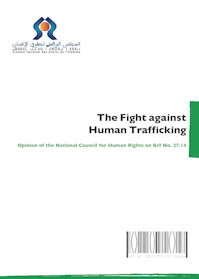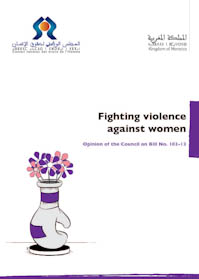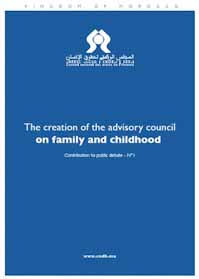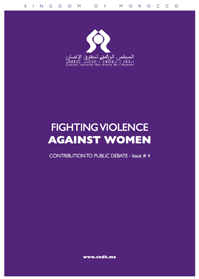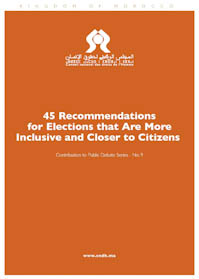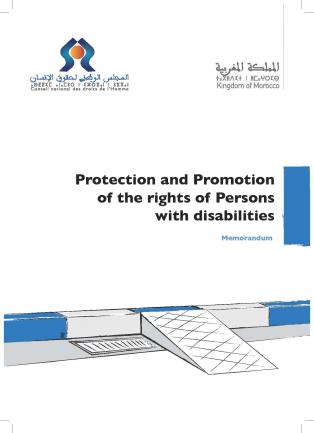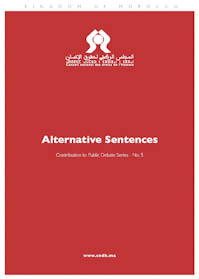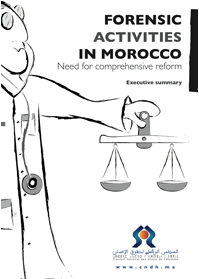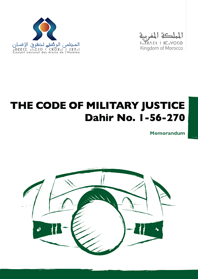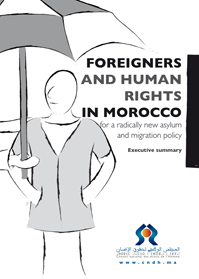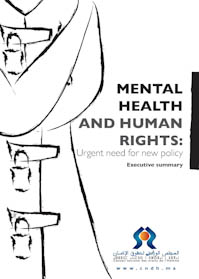MOROCCO ADOPTS A NATIONAL PLAN OF ACTION ON DEMOCRACY AND HUMAN RIGHTS (PANDDH) 2011-2016
Following the recommendations of the Vienna conference held in 1993, the Kingdom of Morocco launched on April 25, 2008 a process to prepare the National Plan of Action on Democracy and Human Rights (Plan). This initiative is a national workshop which saw the participation of various components of the Moroccan society, government, political parties, unions, national institutions and civil society.
The Plan, presented to the Prime Minister on July 9, 2010, is the result of a two-year process of participatory consultation. It was officially launched at a national conference held on 25 and April 26, 2008.
On December 3, 2008, the Prime Minister set up a steering committee responsible for drafting the Plan. This committee was chaired by the Minister of Justice. Its Secretariat General was assigned to the Secretary General of the Advisory Council on Human Rights (CCDH). Following the international approach used in this field, the steering committee scheduled different phases to develop the Plan and prepared several studies and collect information, reports and plans to better analyze human rights reality in Morocco, especially at the level of public policies.
This process was a formal commitment of the government. It reaffirms its policy to set up permanent mechanisms to strengthen the foundations of the rule of law and the process of reform and democratization. Several meetings, workshops and forums at the national and regional levels were organized in the preparation phase of the Plan. Several stakeholders from different governmental departments, institutions and NGOs, etc. participated in those meetings. Thematic working groups were created to determine the strategic main axes of the Plan, which are:
1. GOVERNANCE AND DEMOCRACY: this axe is based on the principles of respect for human rights, equity, equal opportunity and implementation of the methods of good governance which includes transparency, accountability, participation and involvement. These principles are intended to rehabilitate relationship between citizens, State institutions and elected bodies. The objective is to update and harmonize laws with international standards and strengthen the capacity of citizens to participate effectively in the management of public affairs and decision-making.
This axe recommends the following:
- Strengthening political participation and promoting the role of the elected bodies;
- Streamlining and strengthening regional governance;
- Streamlining security governance;
2. ECONOMIC, SOCIAL, CULTURAL AND ENVIRONMENTAL RIGHTS: this axe lists as priority the following rights: education, cultural and linguistic rights, health, labor, housing and environment. A human rights-based approach was presented as a basis to solve some economic, cultural and environment issues.
This axe recommends the following:
- A good education system which would be the basis of citizenship, equality and sustainable development;
- Promotion of national linguistic components on the basis of a human rights-based approach, particularly the Amazigh language and culture;
- Rehabilitation of the system of health and ensuring access to health services;
- A policy to ensure employment and promote equality;
- Social orientation of housing policy;
3. PROTECTION AND PROMOTION OF CATEGORICAL RIGHTS: the protection of the rights of vulnerable people like abused women, children, persons with disabilities, the elderly and immigrants is a strategic interest of the Plan. Thus, the actions under this axe include the improvement of these categories’ living conditions, the application of the principles of equality, non discrimination and equal opportunities and capacity building for these categories.
This axe recommends the following:
- Promotion and consolidation of the rights of the child;
- Promotion and consolidation of the rights of persons with disabilities;
- Promotion and consolidation of the rights of the elderly;
- Guaranteeing the rights of immigrants and refugees.
4. LEGAL AND INSTITUTIONAL FRAMEWORK: this axe deals with the constitutional guarantee of human rights, since the constitution is the main legal and institutional means to entrench these rights and ensure their promotion. The judicial reform, rehabilitation of the judiciary and capacity building of national institutions and committees along with other mechanisms to protect human rights are the essence of this axe.
This axe recommends the following:
- Ensuring and protecting the right of participation in the management of public affairs;
- Strengthening legal protection of women's rights;
- Consolidating the constitutional and legal protection of human rights;
- Protecting the right to freedom of expression and information;
- Strengthening and protecting the right to assembly and expression;
- Preserving archives.
In addition to the aforesaid axis, the steering committee of the Plan presented a plan of action relative to the preparation of studies, seminars and debates to contribute to the good and effective implementation of the PANDDH, and the strategic planning in the field of human rights.
To implement, monitor and evaluate the implementation of the National Plan of Action on Democracy and Human Rights, it was suggested to establish a coordination mechanism and mechanism to monitor, follow-up and evaluate the implementation of the Plan. The monitoring mechanism will be composed of representatives of government departments, national institutions, human rights NGOs and academicians. It will be appointed by virtue of a Prime Minister’s decree. The government shall present an annual report on the implementation of the Plan. The second mechanism is to submit its reports every six months.





